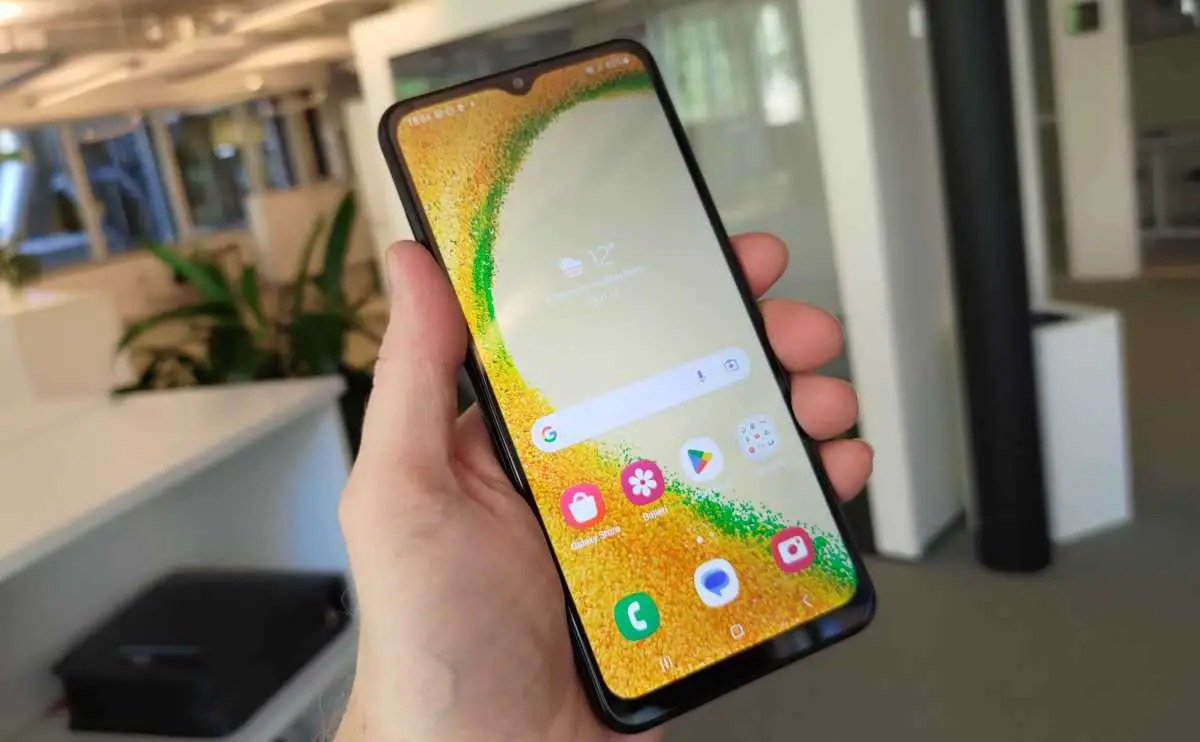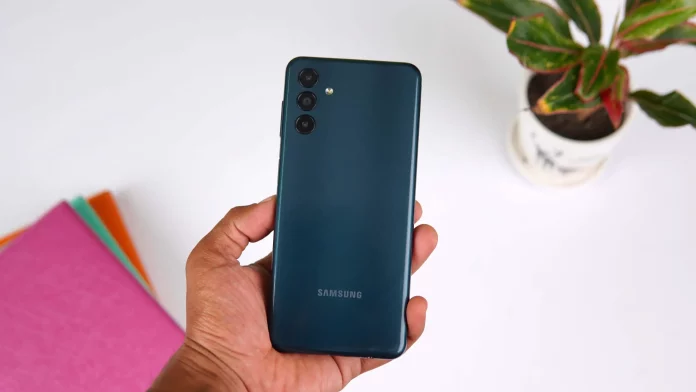Samsung manufactures some of the world’s greatest (and most costly) mobile phones. Even their mid-range phones are typically of great quality and quite popular.
However, something appears to be occurring when the Korean manufacturer is compelled to take on the cheap class. Then Samsung does not fare as well.
I tested the poor Galaxy A13 last year. This year, I couldn’t get my hands on the successor Galaxy A14, so I had to settle with its younger brother Galaxy A04s. I’m not sure what the S stands for, and there is no “regular” Galaxy A04.
With a suggested price of just under £140, it is at least a minor step below the Galaxy A13 and most other cheap phones I’ve tried, but you may buy it for less if you look about.
But, even at that price, is it a worthwhile buy? I have reservations. It is a large and broad phone made completely of glossy black plastic that collects grease, dust, and fingerprints. Thick screen margins make it difficult to handle a 6.5-inch screen. However, its volume and power buttons, as well as the built-in fingerprint reader, are nicely located, have obvious mechanics, and are easy to discover. A dual-sim slot on the side holds a second micro SD card slot.
Old and budget on the inside
The Galaxy A04S is powered by Samsung’s Exynos 850 processor, which wasn’t particularly spectacular when it debuted in 2020. It’s the same processor that let me down in the Galaxy A13, and it’s not much better here. Especially because the base model only comes with 3GB of RAM.

I can’t even run Geekbench benchmark measures on it because the tool has a system need of 4GB RAM. And the measures I can take do not provide me with trustworthy results.
In addition, you only receive 32GB of storage, with slow read and write speeds. Because of this, large apps can take a long time to launch, not to mention the time required for a system boot of the complete phone.
Browsing large web sites is choppy, and there are mini-delays all throughout the interface, such as when you bring up a keyboard and begin typing text. It may be habit, but since there are mobiles in the price range that can avoid much of this, I believe Samsung should be able to do better.
Read also : Sony Xperia 10 V Review
Pluses and minuses for picture and sound
The screen is a 720p display that is crisp enough for most tasks, however certain fine writing might be difficult to see due to pixelation. If the phone’s performance hadn’t prevented it, the 90Hz frame rate may have made scrolling and navigating smoother.
And, certainly, there is occasionally an improvement. It uses a PLS-type LCD panel, which means it has noticeable and unwanted contrast changes at viewing angles about 45 degrees, yet it has stronger contrast from the front than typical IPS LCD panels. And, considering its middling brightness of roughly 380cd/m2 at best, some extra contrast may be required. If it’s light outdoors, you’ll have trouble seeing anything on the screen.
Auto brightness offers little to improve the lighting and relies on the selfie camera rather than a separate light sensor, which drains the battery. The colors on the screen are near to SRGB-grade, but not much more, and while I find them neutral and natural, there are no noticeable blue or red spots in the image.
At the bottom, there is simply one mono speaker. It sounds clear for speaking but is unappealing for music and cinema. On the other hand, I don’t anticipate much more in the cheap category, even if Samsung is known for its audio quality. If you want to connect headphones, you may do so using a standard analogue cable, as the 3.5mm headphone socket is placed next to the power button.

Android 13, nowadays
When the Galaxy A04s was released, it came with Android 12. It now comes with Android 13 and Samsung’s One UI 5.1, but that means one of its two promised Android versions has been “used up.” You’ll receive Android 14 soon enough, but it’s unclear if you’ll get any upgrades after that. This is quite typical in the budget category, but given that Samsung has the finest update policy on its more costly mobiles, it would have been nice to see the same here.
One UI 5.1 is a feature-rich interface, but it’s been toned back significantly for this low-performance phone, so the side menu for easy access to split-screen and dual apps, for example, isn’t enabled. Given the phone’s limited RAM, I’m guessing Samsung doesn’t want to entice people to use it.
Struggling in the evening
There are three cameras on the back: a 50Mp primary camera, a 2Mp macro, and a depth perception support sensor. You won’t be able to take ultrawide-angle photos, but the camera app’s 2x zoom option allows for simple digital zooming while maintaining decent image quality. The camera works well in daytime, with natural color balance and superb dynamics and detail in both shadows and highlights.
It might be tough to shoot rapid action photographs since the focus is a touch slow, but images can be crisp with a steady hand and patience. Portraits and self-portraits turn out good owing to AI-based face identification, however anything else than a person has difficulty with edge detection. You’re filming in 1080p at 30fps at best, with shaky focusing and little stabilisation.
Shooting at night and in dimly lit interior settings is not a pleasant experience. Here, focusing easily loses the last five or ten percent of fine tuning, resulting in blurred details, even when a landscape photograph seems good. There are also some issues with keeping the white balance balanced, and dark surfaces can become mottled at times.

Battery life should be adequate with moderate performance, a power-efficient PLS screen, and a 5,000mAh battery. And, sure, I can watch movies from breakfast to supper at full brightness, or email and surf for even longer if I dim the screen somewhat. It supports 15W USB-C charging, according to the specifications, but no charger is given. I got from zero to 30% battery in half an hour using a 20W Samsung charger I had laying around, and a full charge will take well over two hours. It’s not exactly quick, but you don’t have to charge it at the drop of a hat.
Wi-Fi 5 and 4G connectivity are available, and both appear to be fast and consistent. I don’t think I need much more in a low-cost phone. Some smartphones in this price bracket persistently strive to provide 5G, forcing them to make additional compromises to keep the price low. But I’m not sure how much Samsung could have cut back on the Galaxy A04s and still be profitable, so it’s probably a good thing they’ve restrained you on that point.
This is a phone that is hardly functional, and there are certainly better choices available. If you truly want to save money and find it for less than the regular price of £140, you should look into it; otherwise, I would recommend that you check elsewhere.
Specs
Product name: Samsung Galaxy A04s
Tested: August 2023
System chipset: Samsung Exynos 850
Processor: 8pcs Cortex A55 2 GHz
Graphics: ARM Mali-G52 MC1
Memory: 3 GB
Storage: 32 GB, micro SD slot
Display: 6.5 inch pls, 720×1200 pixels, 90 Hz
Cameras: 50 megapixel + 2 megapixel macro + depth sensor with led, 5 megapixel front
Connections: usb 2 type c, 3.5mm headset
Communications: 2g, 3g, 4g, wifi 5, bluetooth 5.0, gps, galileo, nfc
Operating system: Android 13 with One UI
Other: Dual sim, fingerprint scanner on side
Battery: 5,000 mAh, 12 hours 20 min online video (wifi, high brightness), about 17 hours mixed use (4g, low brightness), about 31 hours calls
Battery charging: 15 W usb c, charger not included
Size: 16.47 x 7.67 x 0.91 cm
Weight: 195 grams
Performance
Antutu Benchmark: 132,091 points
Geekbench 6: Not measured
Geekbench 6 single core: Not measured
3dmark Wild Life: 494 points
Storage, read: 225 MB/s
Storage, write: 147.1 MB/s


